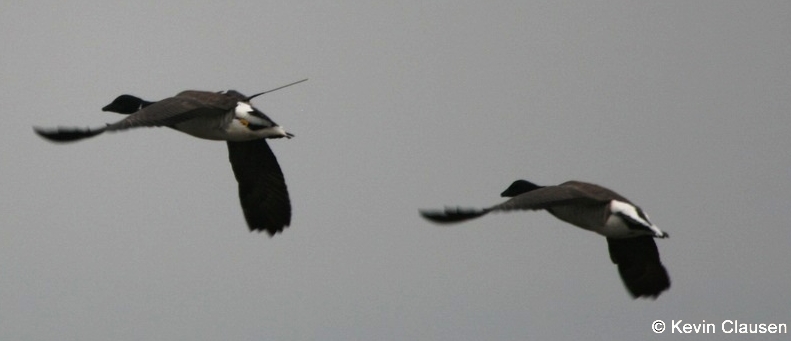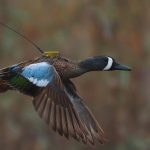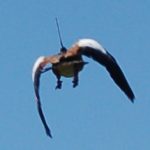← Back
Light-bellied Brent geese migrate non-stop across the open-ocean

Wild geese are among the most famous migratory birds – stars of fiction and documentaries. However, there are a number of different species, the Light-bellied Brent Geese among them. They don’t have the same migratory habits, as Argos telemetry enabled to assess.
Among the different species of geese, the respective duration of the spring and of the autumn migrations differ. Logic would favour a faster migration in spring, with food scarcer at the start, and breeding at the end, while Autumn migration does not have such imperatives. However, some goose species are twice faster in spring than in autumn, while others are spending about the same time on both migrations.
Light-bellied Brent geese (Branta bernicla hrota) are a species of geese migrating from Svalbard and northeast Greenland to Denmark and Lindisfarne in northeast England. They spend the spring and summer close to the Arctic, where they breed, and move back to milder climate in early autumn.
Tracking light-bellied Brent geese
Sixteen light-bellied Brent geese were fitted with satellite transmitters, seven in 2001 and nine in 2011.
Analysis of the tracks shows that their migrations between Svalbard and Lindisfarne (England) cover about 2600 to 2700 km. Their flight speed reached a maximum of 100 km/h (36 km/h on average, stops included). They all did very short stops to rest, flying nearly continuously. Those few stops were not on terrestrial habitats for most, but on the open ocean. The whole travel was done in about 80 hours, while equivalent observations in spring show a duration of 77 h, not significantly lower.
Non-stop travel across the open-ocean, to feed at destination
![Autumn migration route of the tracked Light-bellied Brent Geese in 2001 and 2011. In 2011, the batteries were depleted at start and charged during migration, thus the missing first leg of the trip. (from [Vissing et al., 2020], credit Aarhus University)](https://www.argos-system.org/wp-content/uploads/2022/02/Brent-Geese-migrationroutes.png)
Autumn migration route of the tracked Light-bellied Brent Geese in 2001 and 2011. In 2011, the batteries were depleted at start and charged during migration, thus the missing first leg of the trip. (from [Vissing et al., 2020], credit Aarhus University)
The main difference noticed in spring and autumn is the spread of the migration time. In spring most are leaving at about the same time (give or take 10 days) – in one or two waves. In autumn, the migration start extent between late August to early October. Their speed when migrating is the same, but they do not seem as eager to leave in autumn compared to spring.
The Light-bellied Brent Geese especially favour eelgrasses (Zostera sp.) and Sea Lettuce (Ulva lactuca) as food. Those are not found in the open ocean, though, so their light-bellied Brent geese in both spring and autumn might reflect the lack of nutrients over most of their (open-ocean) migration.
Birdwatching supports telemetry tags do not hinder the geese
Migration timing of unequipped geese were retrieved from citizen science portals for bird watching. Those data show that the starting time was different on the two years of the study. However, the tagged birds were observed to arrive at Lindisfarne about the same times than the rest of the birds – some with most of the birds some slightly later, but not unduly so. This supports the fact that the tags do not hinder the geese.
A better understanding of the ways birds are managing their stores, stops and what trigger them to begin their migration can help in protecting them at the right places and times.
Reference
Marie S. Vissing, Anthony D. Fox & Preben Clausen, 2020: Non-stop autumn migrations of Light-bellied Brent Geese Branta bernicla hrota tracked by satellite telemetry – racing for the first Zostera bite?, Wildfowl (2020) 70: 76–93, ISSN 2052-6458. Available at: <https://wildfowl.wwt.org.uk/index.php/wildfowl/article/view/2720>. Date accessed: 17 May. 2021.
Main photo: Brent geese in flight; the one on the left has an Argos PTT (credit K. Clausen)



